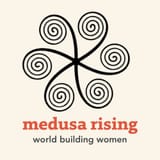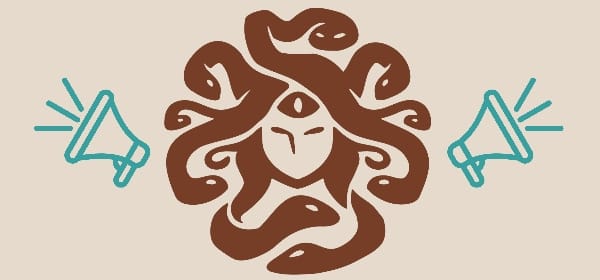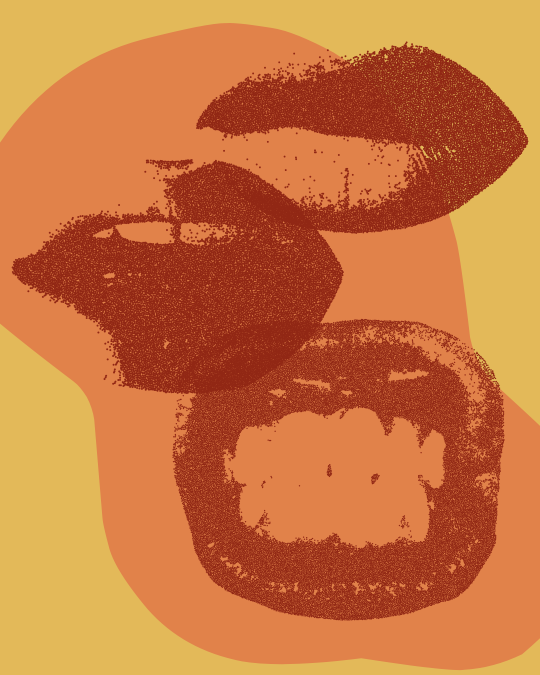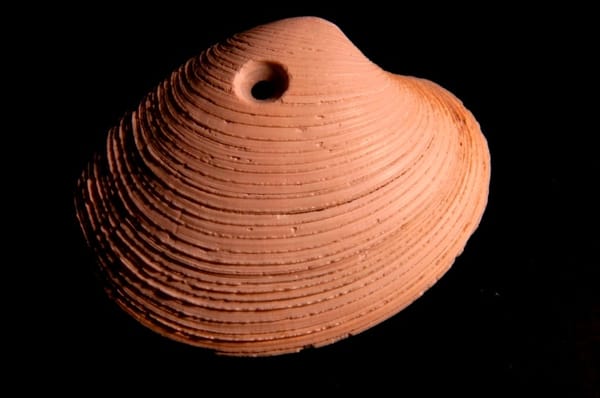Asymmetrical Re-worlding, Part 3: Our Matriarchal Foremothers Are Laughing … If They Aren’t Crying | by Therese Doherty
When you can’t block people’s access to food and shelter, and you can’t stop them from leaving, how can you control them?
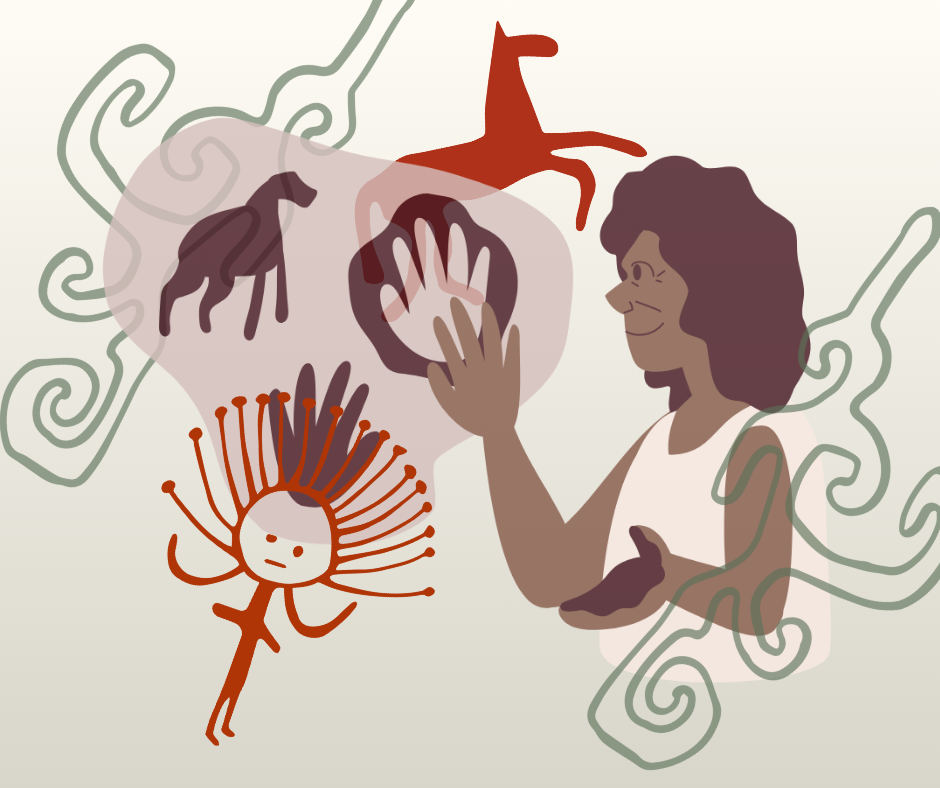
Subscribe between now and Halloween, and get six months of a $12 rate for $8, includes private event invites, first event just after Halloween, two more in winter.
(. ❛ ᴗ ❛.) Or, just leave us a tip. (. ❛ ᴗ ❛.)
We do love to pay these writers, reporters, artists.

Part 3: Our Matriarchal Foremothers Are Laughing... If They Aren't Crying
In Part 1 I attempted to create a map to help us journey as pilgrims beyond ‘the misty, forbidding passes of the Mountains of Dualism’[1] and the gendered programming that emerges from that splitting of experience; and in Part 2 I discussed the dance of différance and a healthy embodiment that integrates mind and body, as well as, importantly, how our identifications can skew and impede our thinking.
That kind of intellectual distortion has led to a lot of postfeminist talk about how men are naturally predisposed to lead, and women to follow,[2] but all this does is replicate the patriarchal order. ‘Our culture can be classified as “patriarchal” … not because power is reserved for biological fathers,’ according to Charlene Spretnak, ‘but because men and women are socialized to understand that males should legitimately act as controlling cultural fathers, while females should appropriately act as dependent, obedient minors.’[3] (Monica Sjöö and Barbara Mor also point out that many ‘sex-role traits originated among the privileged classes—the only people who could afford passive and dependent women, and for whom a bored and indulgent lifestyle made sex-role playing “an amusement.”’)[4]
Yet, for the vast majority of our species’ existence, we were hunter-foragers, and such cultures are fiercely egalitarian. ‘When you can’t block people’s access to food and shelter, and you can’t stop them from leaving, how can you control them?’, Christopher Ryan and Cacilda Jethá ask.
The ubiquitous political egalitarianism of foraging people is rooted in this simple reality. Having no coercive power, leaders are simply those who are followed—individuals who have earned the respect of their companions. Such “leaders” do not— cannot— demand anyone’s obedience.[5]
Those who ‘lead’ do so not in any formal or permanent sense, but according to need and experience. A leader could be a man, or a woman, or even a child—the girl who has a knack for finding water; the boy who knows where a patch of ripe berries is growing; the wise old woman who has successfully raised children and grandchildren. The concept of ownership—men possessing (and thereby controlling) women, land or wealth (elements of patriarchy)—was also largely unheard of, and there is some evidence that multi-female–multi-male mating, not monogamy, was probably the norm[6] (as was bisexuality, if our bonobo cousins are anything to go by). This fluidity allowed children to be raised communally, and for mothers, who ‘For most of human existence … combined productive lives with reproduction’,[7] to continue to contribute in other ways to the life of the group.This egalitarian and flowing social structure is our primary legacy as humans, as is a pluralistic, animist perception of reality. The way we perceive reality now is myopic in comparison.
The belief that women are meant to be dependent on men is a case in point. The postfeminists to whom I am responding specifically criticise female independence, and are therefore pro male ownership and control. A badly photoshopped misogynist meme[8] typifies this view, depicting ‘An Established and Complete Woman’—married with four children, versus ‘A Victim of Feminism’—a single woman eating pizza and drinking wine, saddled with college debt, with a cat, a giant dildo, and her ‘body count’ tallied on the wall.
Female independence is apparently both unnatural, and out of step with the reality of our relational interdependence—I have been informed that women can’t ‘do it all’—but this is a conceptual error. Enabling people of either sex to have the financial independence that is currently required in the capitalist system so that they have autonomy in their lives (autonomy being ‘an indispensable human need’, according to Gabor Maté),[9] does not preclude a larger relational and societal interdependence. Personal freedoms and relational and communal responsibilities must be balanced. Even ‘female primates’, says primatologist and anthropologist Sarah Blaffer Hrdy, ‘enjoy greater autonomy than do either men or women’![10]
And it’s rather rich that this idea of interdependence is being touted when marriage and the nuclear family is being advanced as somehow the right way to achieve that. Yet the nuclear in nuclear family refers to the basic social unit that atomises society. It is one of the primary causes of disconnection, of social isolation—particularly for mothers—and makes true societal interdependence impossible. Ryan and Jethá pose the question:
Could it be that the atomic isolation of the husband-wife nucleus with an orbiting child or two is in fact a culturally imposed aberration for our species … ? Dare we ask whether mothers, fathers, and children are all being shoe-horned into a family structure that suits none of us? Might the contemporary pandemics of fracturing families, parental exhaustion, and confused, resentful children be predictable consequences of what is, in truth, a distorted and distorting family structure inappropriate for our species?[11]
That old adage that it takes a village to raise a child is literally true. Humans probably evolved as cooperative breeders—like, for instance, meerkats, wolves, some primates like marmosets and bonobos, and the wise matriarchal elephants.
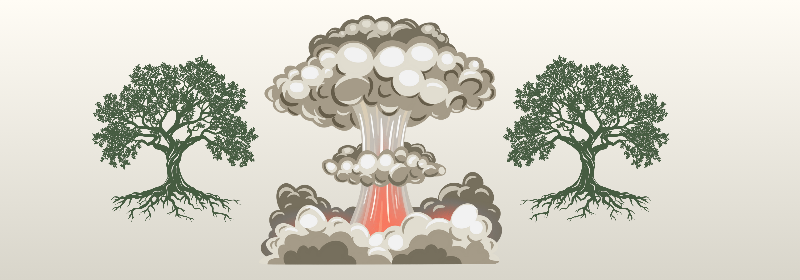
Writer Sylvia Linsteadt laments how our culture makes mothering so difficult. Of her friends who have had babies in recent years, she speaks of the hollowness that they felt after birth, the realisation that ‘it’s not supposed to be this way’, that ‘I’m supposed to have so many more women around me … My whole body is aching for it, and I didn’t even know’. This is ancestral memory. Seeing as human young are particularly helpless when they are born, and mature slowly, we are a species that makes use of ‘allomothering’, and this is best done in matrilineal groups where kin (and others) help out (or, in our current culture, ‘mommunes’!). Fathers can be unreliable, and may come and go, but if there is no mother (certainly no mothering) then there is no life. Women support each other in this. ‘Make no mistake’, Hrdy remarks, ‘reproductively, nothing becomes a female more than remaining among kin’.[12] ‘When mothers remain among kin, they retain more autonomy than when they travel far from their natal place to live among their mate’s kin.’[13] It’s not that help from fathers isn’t welcomed (it often is), but even in the modern world, it’s not enough. No one is meant to ‘do it all’.
Hrdy makes a couple of other important points. First, contrary to the postfeminist view that ‘A man, by virtue of his physical superiority and biological makeup [which I take to mean greater size and strength], carries an inescapable responsibility of leading [i.e. dominating]’, the reality is ‘that larger size alone [does not—and need not] automatically [lead] to dominance’.[14] What ability could possibly be more ‘physically superior’, from an evolutionary perspective, than growing and feeding new life in and from one’s body? In many species (though relatively uncommonly in mammals) females are larger than males,[15] and this doesn’t result in dominance.
Second, in primate species that have social hierarchies, with high ranking individuals able to bully low ranking others, low status individuals are not that way by choice. Rebellions do occur, because ‘subordinate animals are not voluntarily inferior but suppressed’,[16] and this takes a toll on their reproductive success, overall health, and ultimately, their survival. Of humans, Hrdy says that the ‘biological dimorphism of the sexes has become institutionalized’. While in primate societies it might be common for weaker individuals to be victimised, this is
never on the scale with which it occurs among people, and never directed exclusively against a particular sex … Only in human societies are females as a class systematically subjected to the sort of treatment that among other species would be rather randomly accorded to the more defenseless members of the group—the very young, the disabled, or the very old—regardless of sex.[17]
This situation is not ‘natural’—might does not make right—and it’s certainly not what is beneficial for women or men, especially when we know that non-patriarchal cultures have (and still do) exist. ‘Societies in which women have lots of autonomy and authority’, argue Ryan and Jethá,
tend to be decidedly male-friendly, relaxed, tolerant, and plenty sexy. Got that, fellas? If you’re unhappy at the amount of sexual opportunity in your life, don’t blame the women. Instead, make sure they have equal access to power, wealth, and status. Then watch what happens.
… human societies in which women are … free to express their minds and sexuality without fear of shame or persecution—tend to be far more comfortable places for most men than societies ruled by a male elite.[18]
Hrdy’s assertion that it is advantageous for females to remain among kin contains the seed of matriarchy, which Renée Gerlich describes in its most simple sense as ‘a culture where children grow up learning to care for their mothers’ homelands’. It’s a system that is usually both matrilineal and matrilocal. Founder of the field of Modern Matriarchal Studies, Heide Goettner-Abendroth tells us that, ‘Based on the older meaning of “arché,”’—‘beginning’ rather than ‘domination’—’matriarchy’ means “the mothers from the beginning.” This refers both to the biological fact that through giving birth, mothers engender the beginning of life, and to the cultural fact that they also created the beginnings of culture itself.’[19] Max Dashu elaborates further:
Patriarchies organize kinship and society around father-lines, and cannot exist (or persist) without instituting control over women … Matricultures grow out of the natural fact that motherhood is visible and maternal kinship is known … Which means that if the land is considered the clan/tribe’s property, there’s no need for patrilineality and its dependence on female subjugation. Indeed … the men there would defend their social order and its cosmology against the judgement and impositions of [outsiders].[20]
Yet ridiculous statements are being made—for instance, that feminists think that ‘Men are not going to care for us better than we can’—ignorant not only of contemporary socioeconomic realities and male violence statistics, but also of this woman-/mother-centred past, and of very real future possibilities. Women’s dependence on men is supposedly to avoid ‘paying big tradeoffs … in your or your family’s life’, but as Hrdy makes clear, the ‘combination of work with motherhood has always entailed tradeoffs’.[21] That’s life. Women (and our female primate ancestors) have always ‘worked’ alongside raising young, but ‘What is new for modern mothers … is the compartmentalization of their productive and reproductive lives’.[22] It’s not that women are not supposed to work outside of the home—being a mother or homemaker ‘does not constitute a female identity’, said Luce Irigaray. ‘It is a function or social role, no more’[23]—but that the fragmented patriarchal system, in which the public is cut off from the private, hasn’t been created with the needs of mothers or children (or indeed, any feeling human) in mind. But matriarchy has been, and it enables a minimisation of the tradeoffs that women inevitably have to make.
‘Mother-right … allows for “social motherhood,”’ Dashu says, ‘collective assumption of responsibility for the young and very old, for anyone who needs special care’:
In a social motherhood system, you have an entire generation, actually tiers of generations, that are caring for [the] child. You have societies where all of the women of the mother’s generations are called Auntie and are even regarded as mothers, addressed as mothers. And the brothers are responsible as well, particularly in matrilineal societies; it’s the mother’s brother who takes much of the role that we think of as ‘father.’ Social motherhood is a built-in support system, putting women and their life-giving power at the centre of the life support network.[24]
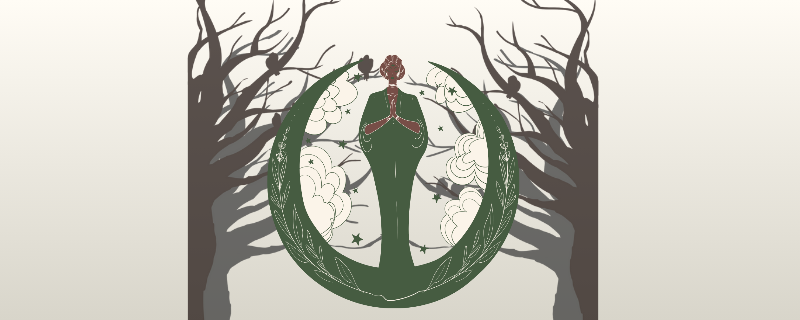
Men are constantly touted as being ‘protectors’ and ‘providers’, but not only is this easily debunked, it denies the very stark reality that most male violence against women occurs within the home, where women are isolated (and if financially dependent, unable to leave). The fantasy that ‘reactionary feminists’ like Mary Harrington and Louise Perry are peddling, says Rose Rickford, of ‘the nuclear family … as a safe place to retreat to … a safe inner sanctum … only works if you are completely committed to rejecting the idea that harm is coming from within the family’.[25]
But, the postfeminists scream, it’s not all men! Yet the luck that some women have in finding a decent male partner doesn’t absolve us of the need to address the reality that many women don’t. We can’t just settle back into privilege and avoid confronting the patriarchal world as it is, leaving less fortunate women to suffer. The idea that marriage and the nuclear family provide the path to liberation, or will save civilisation as we know it, is a simplistic and individualist mono-answer to a situation that requires a plurality of understanding and collective actions. Indeed, the nuclear family is civilisation in miniature, the smallest scale example of the hierarchical pattern of domination, with the male head of the family ruling like a king over the subjects of his own personal kingdom.
Meanwhile, some postfeminists even idolise submission, exemplified by Nicole Daedone’s tone deaf quip that ‘Everybody wants to be the fucker and nobody wants to be fucked.’ Some women evidently cannot conceive of sexuality outside of the patriarchal mentality. The word ‘fuck’ has many excellent uses, but when applied to sex it has debasing and violent connotations. This thinking replicates the idea of the Phallus as vertical power-play rather than horizontal connection. The conquering, penetrating, active male versus the conquered, compliant, passive female, who is done to rather than truly related with. The extreme privilege of this position is evident, ignoring the daily experience and realities of most women. This is not about the denial of pleasure,[26] but ‘Given that phallocratic reality purveys its own forms of sexual “pleasure”, through the eroticization of domination/subordination,’ as Denise Thompson points out, ‘feminism cannot embrace unreservedly “pleasure” as the liberating sexual practice, without exploring the roots and ramifications of male desire as well’.[27]
There is deconstructive work to be done before recreation can begin. To break open, then integrate. A challenge to the myth of male sexuality is required, and that will not be welcomed except by the rare men who have already been questioning the cult of masculinity. Riane Eisler points out in Sacred Pleasure that the distortion of sexuality through ‘the equation of masculinity with both sexual and social domination and of femininity with sexual and social submission—is critical to the maintenance of a dominator social organization, and particularly to the male socialization for domination and violence’.[28] The end of male dominance, rape culture and the sex industry are all obligatory if we are to enable an entirely different way of relating to emerge. The idea of anyone being either the fucker or the fucked needs to become obsolete. As Françoise d’Eaubonne said:
the freedom of the sexual is tied to women’s freedom and the revolution … You can’t liberate the sexual alone but must liberate the body altogether, of which the sexual is part; and the free disposition of the sexual body—not only of the sexual organs—is capital for the woman and puts the entire society into question; that is the only a true revolution, and it cannot take place without dismantling the entire economic system.[29]
Again, regarding group-living primates, Hrdy makes an excellent point: ‘it could be argued that a troop needs males for territorial defense only because competing troops are also likely to have them.’[30] To state the completely obvious: men are only a problem because they are a problem—endless preparation for war means that war never ends. Men feed off each other, sharing their poison, rather than purging themselves so they can actually evolve and then fill up on real nourishment.
Therese Doherty lives with chronic illness and occasionally writes and makes art, but mostly just reads a lot. She can be found @offeringsfromthewellspring and you can peruse and purchase her artwork at Offerings From the Wellspring at Redbubble.
Val Plumwood, Feminism and the Mastery of Nature, Routledge: London, 1993, p. 3 – find this book in the Radical Feminist Library ↩︎
Umm … it’s predominantly men who lead the world, and have you seen the state of it? That women follow such madness is more than foolish. ↩︎
Charlene Spretnak, States of Grace: The Recovery of Meaning in the Postmodern Age, HarperSanFrancisco: New York, 1991, p. 116 ↩︎
Monica Sjöö & Barbara Mor, The Great Cosmic Mother: Rediscovering the Religion of the Earth, HarperOne: San Francisco, 1987/1991, p. 66 – find this book in the Radical Feminist Library ↩︎
Christopher Ryan & Cacilda Jethá, Sex at Dawn: How We Mate, Why We Stray, and What It Means for Modern Relationships, Harper Perennial: New York, 2010/2012, p. 161 (pdf page number) ↩︎
See Ryan & Jethá. Multi-female–multi-male mating does not suggest a random, meaningless promiscuity. It’s likely our ancestors still chose partners based on attraction and affection, but there was probably an absence of ‘control’ and ‘ownership’. Also, I am not suggesting that monogamy is not a valid choice in the modern world, as it does work for most people, but touting it as the right and only way, as well as in heterosexist terms, erases the other ways of relating and forming families that do or could also work. Sjöö & Mor state in The Great Cosmic Mother: ‘Creative women and men in all ages have found rigid heterosexuality in conflict with being fully alive and aware on all levels—sexual, psychic, and spiritual—because it is a mental and emotional limitation, as well as a physical one. It is as if, on all levels of our being, we are split in half—locked into one half, and forbidden the other. We are split against ourselves, and against the “self” in the other, by this moralistic opposition of natural polarities in the very depth of our souls. And the result is war, necrophilia, alienation at the root.’ pp. 67-8 ↩︎
Sarah Blaffer Hrdy, Mother Nature: Maternal Instincts and How They Shape the Human Species, Ballantine Books: New York, 1999, p. 109 ↩︎
If you compare the image with the more wholesome original it was based on you’ll see that it’s not just misogynist but racist as well! ↩︎
Gabor Maté, with Daniel Maté, The Myth of Normal: Trauma, Illness & Healing in a Toxic Culture, Vermillion: London, 2022, p. 150 ↩︎
Sarah Blaffer Hrdy, The Woman That Never Evolved, Harvard University Press: Cambridge, Massachusetts, 1981/1999, p. 9 ↩︎
Ryan & Jethá, p. 101 (pdf page number) ↩︎
Hrdy, Mother Nature, p. 51 ↩︎
Hrdy, Mother Nature, p. 102 ↩︎
Hrdy, The Woman That Never Evolved, p. 19 ↩︎
Incidentally, one of the most hilarious examples of extreme sexual size-dimorphism occurs in the blanket octopus. The female can grow up to two metres; the males to no more than an inch. Adorable! ↩︎
Hrdy, The Woman That Never Evolved, p. 119 ↩︎
Hrdy, The Woman That Never Evolved, p. 185 ↩︎
Ryan & Jethá, pp. 123-4 (pdf page number) ↩︎
Heide Goettner-Abendroth, Matriarchal Societies: Studies on Indigenous Cultures Across the Globe, Peter Lang: New York, 2012, p. xvi – find this book in the Radical Feminist Library ↩︎
Esmée Streachailt, ‘Re: Framing Radical Feminism: For 40,000 Years Women Lived in a World that Did Not Hate Us: Part 1’, THE RADICAL NOTION, Issue Eleven (Spring/Summer 2024), p. 111 – all issues are available to read online or download for free here: https://theradicalnotion.org/ ↩︎
Hrdy, Mother Nature, p. 109 ↩︎
Hrdy, Mother Nature, p. 109 ↩︎
Luce Irigaray (translated by Karin Montin), Thinking the Difference: For A Peaceful Revolution, Routledge: New York, 1994, p. 18 ↩︎
Jane Clare Jones, ‘Matricultures and the Matrix of Life: An Interview With Max Dashu’, THE RADICAL NOTION, Issue Six (Winter 2022), p. 98 ↩︎
Jane Clare Jones, Rose Rickford, and Vic Rimell, ‘On the Heart of the Boundary: A Conversation’, THE RADICAL NOTION, Issue Eleven (Spring/Summer 2024), p. 64 ↩︎
For a fictional exploration of what healthy sexuality might look like, see Louise M. Hewett’s novel, Mist (Pictish Spirit #1), Egg & Serpent Studio, 2016 ↩︎
Denise Thompson, ‘Pleasure and Danger’, THE RADICAL NOTION, Issue Seven (Spring/Summer 2022), p. 16 ↩︎
Riane Eisler, Sacred Pleasure: Sex, Myth, and the Politics of the Body, HarperOne, 1995, pp. 119-20 (ebook page number) ↩︎
Françoise d’Eaubonne (translated and edited by Ruth Hottell), Feminism or Death, Verso: London, 2022, p. 177 – find this book in the Radical Feminist Library ↩︎
‘Hrdy, The Woman That Never Evolved, p. 73’ ↩︎
